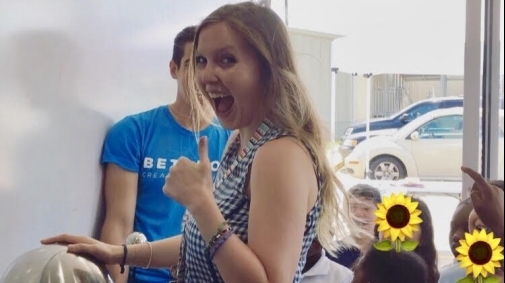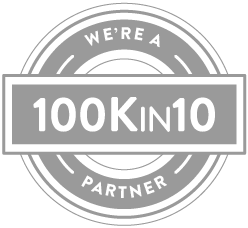Building Literacy in Classroom Culture

$0
$825 goal
This Fundraiser Has Ended
Every share can raise $11

The Description
TLDR: I am planning for my classroom next year (switching grade levels to kindergarten) and am starting to fundraise for materials. I would love to have your support! More details about what exactly the funding will go toward, and the plans that I have, are available below.
Hello and thank you for clicking on my fundraising page for my kindergarten classroom! I work at the Ridgemont Early Literacy Center, a specialized program based out of Ridgemont Elementary, a Title I school in Fort Bend ISD. I am going into my second year of teaching and am switching grade levels from first grade to kindergarten. I am excited but a little nervous for the transition, but I want to start preparing so I can have the coolest classroom with fun, hands-on learning opportunities, and so I'm starting to think about the changes I can make.
I was so lucky last year to have an outpouring of support from family and friends, and I truly appreciate all the resources I had help to acquire. However, I soon realized I didn't even fully know what was needed. One of the biggest things I learned this past year was how unprepared I was. While I had ideas for things I wanted to do, there was a whole range of things that never would've occurred to me that I needed or that were even a possibility! I also didn't realize how quickly elementary classrooms run out of supplies such as pencils, tissues, paper, wipes, crayons, and erasers - I ended up having to buy a lot of those throughout the course of the year, and even so, "we're out - ask a friend if you can borrow theirs" has become a common refrain. Another thing that I didn't realize would require so many supplies is hands-on learning opportunities, such as stations or classroom projects. I ended up spending a lot of money on stations and materials for projects, and I would've liked to do many more interactive projects throughout the year, but one big obstacle to that was finances. While I was lucky to have a lot of support from my parents in acquiring certain station materials, it's a big financial undertaking to give the kiddos the resources and opportunities they truly deserve.
This is something I have been working on all year. In addition to family support and spending my own money, I also applied for and was awarded a grant from FBISD for 10 wobble chairs for my students (so enough wobble chairs for likely a little less than half of the kids). I am so excited for this to kick off next year and be part of my flexible seating plan. However, I would still like to have other flexible seating options including back pillows for reading, as well as a beanbag chair. There are a lot of
With that being said, I am hoping to raise funds to enhance my classroom and make it an awesome community space that is hands-on and interactive at all times. I have been brainstorming tons of ideas and I would love to see those come to fruition. More details on that below. Before I get there, here is a breakdown of how I plan to use the funds I am budgeting for:
Crayons - $10
Child size scissors - $10
Incentive sticker charts - $20
Stickers - $15
Cool down kit - $30
My idea for a "cool down kit" is an awesome practice for social and emotional learning. Essentially, I want to create a tool for kids to practice expressing their emotions in a healthy way and being able to control them and calm down when needed. This would be a bucket that I place in a designated "cool down area" that would contain tools such as a timer so kids can pace themselves and know when it's time to return to learning, play dough, a coloring book and colors, a small stuffed animal, etc.
Storage drawers - $20
Expo markers - $20
Class set of small dry erase boards - $30
Storage buckets for each table - $15
Anchor chart paper - $30
Chart markers - $15
Miniature laminator - $30
Laminating sheets - $20
Pencil sharpener - $25
Baskets for book and station organization - $20
Flexible seating options - $50
Another main initiative I have planned for my classroom is to create lots of flexible seating options for creativity and comfort, to make students truly feel safe and like they are able to be themselves. Flexible seating has been shown to really benefit kids rather than a more rigorous approach where they're sitting in their desks ALL day, every day - I know that even when I give my kids the chance to lay on the floor and do work under their desks, they get SO excited!
Stations/hands on activity funding - $150
I plan to use this portion of the funding for my hands-on projects and stations this year. I have learned that stations and small group lessons with the teacher are truly the heart of the independent exploration that occurs in early childhood education. I want to truly invest in obtaining resources that will allow my students as much exploration, hands-on learning, and discovery as possible.
In order to better explain what sorts of things I am using this funding for, I will explain below some of the materials I spent money on this past year and what I used them for. You can also check out my teaching instagram, @miss_gibson, for reference.
- "Cars" sight word literacy station. Each toy car has a letter, students have to drive and "park" the car in order to spell a sight word, and write a sentence with that word.
- "Sight word Jenga" - Jenga game with a sight word on each block. As students play the game, they must read the sight word on the block they pick and write a sentence with it.
- Connect 4 Compose/Decompose math game - each circle token has a number on it. As students play the game, they race to decompose each number as many ways as possible by writing number sentences.
- Bowling subtraction game - A toy bowling set. As students bowl, they must record on a sheet their number sentence to practice composing and decomposing 10 and their different subtraction strategies including number sentences and number bonds.
- Science stations using different kinds of dirt to look at under a microscope, see what happens when water is added, and feel the different textures, as part of our science unit on dirt.
- A "Poetry Slam" performance - students spent a week learning about different types of poems and writing them. They eventually had a book of poems they composed. Parents were invited, I used my bluetooth karaoke microphone and made hot chocolate to turn our classroom into a "coffee shop" and each student performed their favorite poem they had written.
- STEM activities such as bridge building with popsicle sticks and blue tape, and 3D shape building with toothpicks and marshmallows, to incorporate both the math unit on 3D shapes and the science unit on architecture.
- Interdisciplinary science and reading activity: Reading and discussing "Bartholomew and the Oobleck" and then making Oobleck out of corn starch, water, and green paint, and discussing states of matter.
Things I want to purchase for hands-on activities next year:
- Many of the same activities I did this past year, I would love to repeat next year, and I will need to re-buy certain materials.
- I also want to purchase modeling clay for students to use interactively and across disciplines, for activities such as shaping letters, modeling geographic landforms, representing word problems, etc.
- I would like to have a "garden" letter station where there is dirt and a box and students dig out letters to form their sight words.
- I would also like to actually grow plants with students as part of our science unit on plants and moving into life cycles.
- Things such as popsicle sticks, letter puzzles, toothpicks, Ziploc bags, clothespins, etc., for all sorts of activities, I know I can never have too much of.
Back Up Plan
If I do not reach this goal, I will prioritize the necessities that I was constantly running out of throughout the year such as pencils, paper, expo markers, chart paper, etc., and I will do my best to be resourceful with the rest and try to acquire what I can from where I can! :)
About the Creator

I am entering my second year of teaching with Teach for America and am overjoyed with the impact I was able to make this year with my first graders in the Early Literacy Center. After one year where most students entered significantly below grade level, 71% of my students made OVER one year's growth and 7 are now reading on a mid second-grade level. It has been lots of work, but it has been so rewarding and I am thrilled to continue the hard work in my second year, as a kindergarten teacher.
Your Impact
5
Helpful Friend
Thank you!
Investment
10
Star Student
Thank you!!
Investment
15
Golden Child
Thank you!!!
Investment
Investments (0)
This Fundraiser Has Ended





Add a Comment